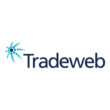Latin American markets looking for international investors to boost liquidity
New trading systems in Brazil and Mexico are prompting high hopes that Latin America’s two largest markets will attract more international investors and grow their liquidity base, according to panellists at the TradeTech conference in London.
“Both countries have just fully implemented high speed trading engines in equities and derivatives,” said Danielle Tierney, Latin America analyst at research firm Aite Group. “Brazil’s BM&F Bovespa migrated its equities segment to the new Puma engine last Monday, while the Mexican exchange has also just shifted its derivatives segment. Both projects required heavy investment and they are a major step to building a community of international participants.”
According to Tierney, the removal of a stamp tax in Brazil late last year has prompted a significant uptick in liquidity in a country that has already become a byword for growth in recent years. Meanwhile, a strong IPO pipeline in Mexico has helped to create a robust market for investors. There are also signs that measures to attract a broader base of participants from around the globe are succeeding; last year in Brazil, for the first time according to Aite figures, Europe surpassed the US as a driver of foreign volumes in Brazil.
Meanwhile, in Mexico a cultural change is underway, as market participants learn to adjust to the arrival of new kinds of participants, including sophisticated HFT firms, as well as the arrival of new kinds of venue, such as the dark pool launched by the Mexican exchange in September last year.
“In Mexico there’s been more interest in HFTs and prop traders from the US of late,” said Carlos Hernandez, head of trading technology at Mexican broker Interacciones Casa de Bolsa. “That has impacted liquidity. The arrival of market makers has helped to provide a very lively market. The interaction of long-term investors with completely low-touch trading strategies is very interesting. The Mexican market is currently exploring how to build the right mix of participants.”
At the same time, Hernandez notes that the new trading technology has brought an order of magnitude improvement in the exchange response times, creating much reduced latency for all participants. Reliability has experienced a similar step up from the previous trading system, he says.












































